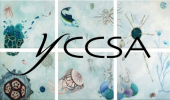© Pint of Science, 2025. All rights reserved.
You may have heard of the Great Wall of China and Hadrian’s Wall, but humans aren’t the only ones building walls. Cells are the basic biological units of all life on earth, compartments surrounded by a protective barrier wall and jam packed full of molecules that keep the reactions essential for life flowing. You should definitely be familiar with cells, because your body contains trillions of them! Although the cells and chemical magic that happens inside cannot be seen with the naked eye, we can use the latest and most cutting edge scientific equipment to check it all out in real time.
Drug resistance: will bacteria win the day?
Giampaolo Pitruzzello
(PhD student)
Since the serendipitous discovery of penicillin by Fleming in 1928, antibiotics have been regarded as the wonder discovery of the 20th century. This achievement is now under threat because bacteria are developing resistance to common drugs at alarming rates. In this talk, I will explore how slyly bacteria survive antibiotic treatments, transfer resistance to their fellow microorganisms, and how we are fuelling these mechanisms. I will also present some of the notable research efforts being undertaken to try outperforming bacteria and preserve the power of antibiotics for the future.
Lights, Camera, Models: Using Microscopes and Maths to View the Glamorous World of Cell Membranes
Dr. Christoph Baumann
(Lecturer in Molecular Biophysics)
Dr. Mitya Pushkin
(Researcher)
Every cell – whether human or bacterial – is surrounded by a membrane.
The membrane is the first point of contact with the cell’s environment. Therefore, it
must function as both an adaptable communication exchange and a protective barrier.
Advances in light microscopy allow us to see membrane structure, and follow a single
molecule moving through the membrane. Mathematical models can help us understand
how trillions of invisible molecular interactions give rise to what we see. Join us
for a guided tour of how microscopy and maths are being used to improve our understanding of cell membranes!
The membrane is the first point of contact with the cell’s environment. Therefore, it
must function as both an adaptable communication exchange and a protective barrier.
Advances in light microscopy allow us to see membrane structure, and follow a single
molecule moving through the membrane. Mathematical models can help us understand
how trillions of invisible molecular interactions give rise to what we see. Join us
for a guided tour of how microscopy and maths are being used to improve our understanding of cell membranes!
Improving Genomes for a Sustainable Bioeconomy
Dr. Agnes Noy
(Researcher)
Scientists are trying to improve the genomes of simple organisms so that they can be transformed into small factories to produce all type of products like antibiotics, food or biofuel in a more sustainable way. This could seem simple as, nowadays, genome sequences are easy to obtain. However, they are not enough for understanding how a genome works. In this talk, I will explain the most exciting advances on genome engineering and the challenges that remain unsolved.
Map data © OpenStreetMap contributors.


